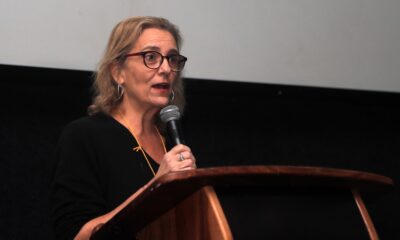
Featured Item

The Mountain Jews who have seen it all
The Jews of the Caucasus have “been through it all”, said Ruben Shimonov, a Detroit-based educator, community builder, and social entrepreneur, speaking at Limmud Johannesburg last weekend.
This isn’t surprising considering that these communities, named after the Caucasus Mountains which separate southwestern Russia from Georgia and Azerbaijan, lie just north of the Middle East, just west of Central Asia, and just south of Russia.
“This is a region at the crossroads of important parts of the world, important empires, and civilisations, so the cultures here will probably reflect all those histories, empires, and civilisations,” said Shimonov.
“It’s a geostrategic area, in many ways a bridge from Asia to Europe, from the Middle East to North Africa. It’s been conquered and reconquered many, many times. The Jewish communities there have been through it all to the present day. This has given Kavkazi, Georgian, and Bukharian Jews a sense of deep pride.”
Georgia has one of the oldest surviving diaspora Jewish communities, starting from Babylonian exile in the sixth century BCE, said Shimonov.
For three millennia, this community has survived successive empires – such as the Achaemenid, Greek, Roman, Arab, Byzantine, and Ottoman empires. The Georgian Jewish community predates Christianity and Islam in the region. Jews have been in Georgia for more than 26 centuries.
Mass aliya of Georgian Jews occurred in the 1970s and 1980s, said Shimonov. “How did it begin? In August 1969, 18 families wrote a letter to Prime Minister Golda Meir and the Human Rights Commission of the United Nations. They requested permission to emigrate to Israel because the Union of Soviet Socialist Republics wasn’t letting Jews out.
“In 1971, Georgian Jews organised a hunger strike outside a Moscow post office, asking to be let free and go to Israel. This deep Zionism was among the traditional Georgian Jewish community.
“Ultimately it led to the migration of more than half, 30 000 of the 50 000 Georgian Jews, to Israel in the 1970s and 1980s.”
In the 1990s, 20 000 more Jews made aliya, said Shimonov. Having once been home to 100 000 Jews, Georgia’s Jewish population today is no more than 6 000. The country has at least one Jewish museum and kosher restaurant. There are 200 000 Georgian Jews in Israel, and 10 000 in Queens, America.
Kavkazi Jews are also known as Mountain Jews (because they come from the Caucasus Mountains), Gorsky Jews, Caucasus Jews, and Juhuro, which means “Jews” in the Kavkazi language, said Shimonov.
“A narrative within the Kavkazi Jewish community says that at least part of their story begins with migration first to what is essentially Kurdistan today, and then from there, farther north into the Caucasus. This is one theory.”
Shimonov said some theories suggest that Kavkazi Jews migrated to protect the frontiers of the Persian Empire.
“During the Khazar empire, a Turkic empire, the higher-ranking part of the kingdom, including the king, converted at some point to Judaism. Probably Kavkazi Jews living in this empire made the king and those in power more aware of Judaism.
“In the 1600s, 1700s, mass migration occurred to a semi-autonomous Jewish region or governing body known as the Jewish Valley. It was in Dagestan. For more than 100 years, this was the real centre of Kavkazi Jewish life. Because of tribal wars and the region changing hands, these Jews escaped a bit more south to the Quba Khanate, a Muslim dynasty under the direct protection of King Huseyn Ali Khan and his son, Fatali Khan. They were good to the Jews. They built an all-Jewish town known as Qyrmyzy Qasaba.”
Situated in Azerbaijan today, this town is believed to be the world’s only all-Jewish town outside of Israel and America, said Shimonov.
Regarding the maximum number of Kavkazi Jews today, Shimonov said there are 20 000 in Azerbaijan, 100 000 in Israel, 30 000 in Russia, and 30 000 in the United States.










